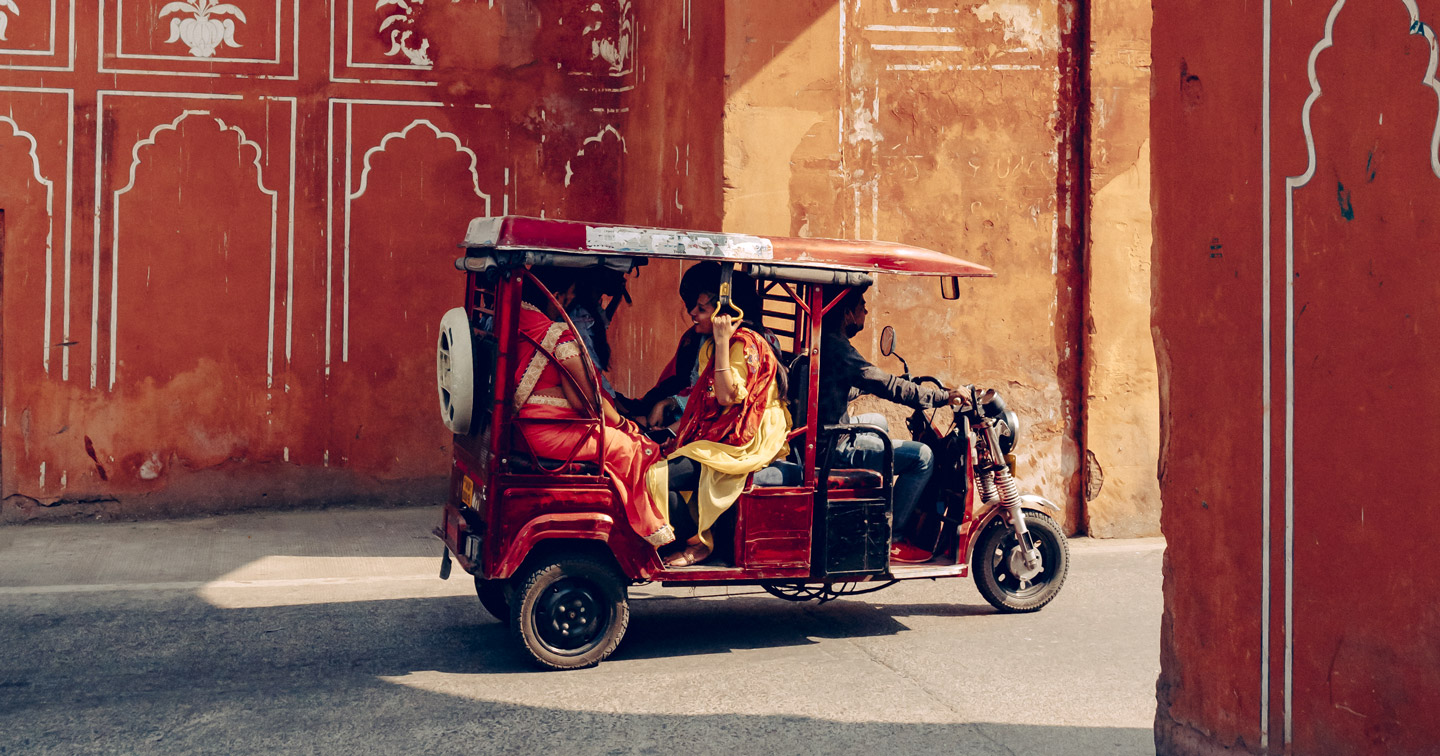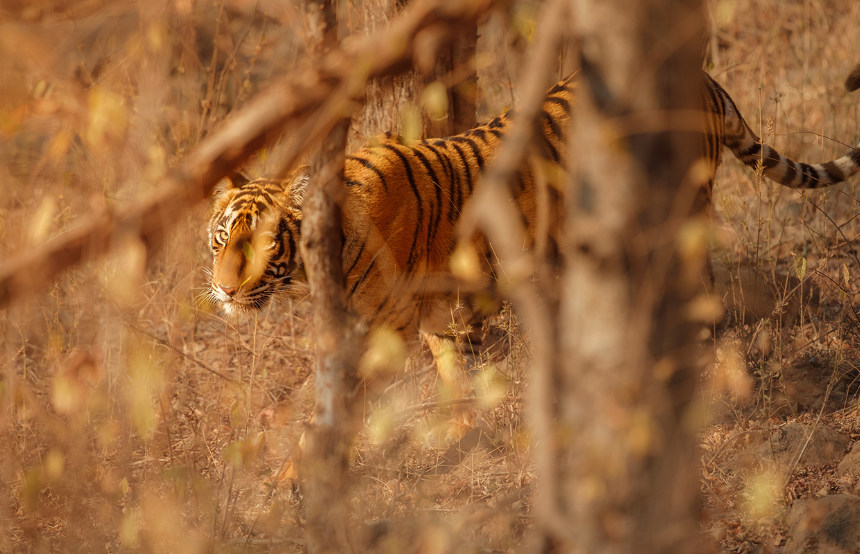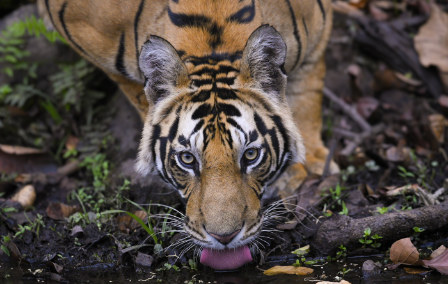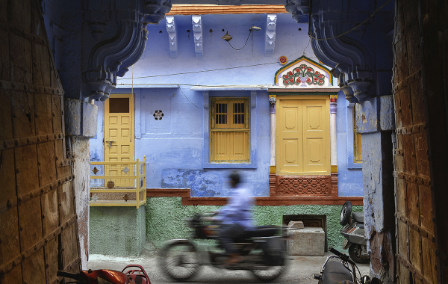Published 13th Mar. 2023
Reading time
Full of prowling tigers, green landscapes and enough waterfalls to make you totally ignore TLC’s advice, Central India is considered the country’s wildlife hub. India’s two central states, Madhya Pradesh and Chhattisgarh, are always included in the definition of this otherwise loosely defined region, and are where you can experience the majority of the best things to do in Central India. While wildlife is Central India’s forte, the region is also home to many of India’s indigenous people, along with ancient temples, forts and structures which are testament to this amazing country’s long history. Still not convinced to visit this part of the country on your next holiday to India? Read on for more info...
The majestic Royal Bengal tiger – otherwise known as the Indian tiger or simply the Bengal tiger – is the national animal of India. These powerful hunters roam the country’s grasslands, forests and mangroves, and can grow to a whopping ten-and-a-half feet. In India’s Madhya Pradesh region, Kanha Tiger Reserve is one of the oldest protected areas in India, a place to seek out tigers along with Indian leopards, bear sloths, Bengal foxes and Indian jackals. Bandhavargh National Park, also in Madhya Pradesh, has the highest density of Royal Bengal Tigers in the world, along with a healthy population of white tigers. In fact, it’s believed that all white tigers trace their roots back to Bandhavargh. Further north is Ranthambore National Park, a vast wildlife reserve where wild tigers roam free in beautiful surroundings. Here, you can go on game drives and walks to see tigers along with leopards, bears and birds. It’s worth noting that in October, the parks are green and luscious after monsoon season, which can make it more challenging to spot animals.
On a five-mile stretch in the small town of Bhedaghat, the Narmada River has carved a spectacular gorge into the soft marble cliff, known as Marble Rocks. Climb aboard a rowing boat and experience the calm of the river as you admire the different shapes and sizes of the cliffsides towering above you. There are several boat trips available at Marble Rocks, but it’s worth paying for the longest one to see the beauty of the whitest marble further down the river. For a truly magical experience, visit this scenic site during Purnima (full moon) when the moonlight reflects on the water and lights up the marble with an iridescent glow. On Sharad Purnima in particular – a religious festival celebrated on the full moon day of Ashvin (September to October) – it’s believed that the moon showers elixir onto the earth, and that boating during this time is a healing experience for the body and soul.
At an altitude of 3,500ft stands Central India’s only hill station and a UNESCO designated biosphere reserve: Pachmarhi. Popularly known as the Queen of Satpura due to its location amid the lush green canopies of the Satpura Range, Pachmarhi is richly biodiverse, containing over 50 mammal species, 254 types of bird, 30 different reptiles and 50 butterfly species. Along with natural beauty, Pachmarhi has cultural significance as home to the Korkus and Gond tribes, with an extensive cave network where you’ll find rock paintings up to 2,500 years old. Long story short, there’s a lot to experience here: watch the daylight fade at Rajendragiri Sunset Point, visit caves like Bada Mahadev, Gupt Mahadev and Jatashankar, or take in the stunning surroundings at Handi Koh Gorge. Perhaps one of the best things to do in Central India, however, is to enjoy Pachmarhi’s many waterfalls: Bee Falls – so-called because the water sounds like a buzzing bee from a distance – is the perfect place for a picnic, where a handful of vendors sell refreshments and there are several pools for taking a dip. Deep in Pachmarhi’s jungle is Apsara Vihar, a beautiful swimming spot whose name translates to Fairy Pool; while Silver Fall is Pachmarhi’s tallest waterfall, and although it isn’t suitable for swimming, a short climb will bring you magnificent views.
Also known as Gwāliiyar Qila, Gwalior Fort was named the pearl of Indian fortresses by the Mughul emperor Babur. It’s been around since at least the tenth century, though inscriptions and monuments suggest it could have existed as early as the sixth century (that’s around 400 years before the Kingdom of England was formed). Legend has it that a local man named Gwalipa cured the king of leprosy, and to show his gratitude, the king founded the city in Gwalipa’s name. A collection of palaces, temples and gates, this sandstone fortress provides stunning views across the city along with the opportunity to marvel at giant statues, colourful walls and impenetrable defensive structures. After a day spent on your feet soaking up all that culture, we suggest you indulge in a treatment or two at Usha Kiran Palace’s Jiva Spa, located in Gwalior itself.
Dubbed the Niagara Falls of India, Chitrakote Falls is 980ft wide, making it India’s widest waterfall. This mesmerising natural spectacle can be found on the Indravati River in Chhattisgarh, a heavily forested state known for its temples and waterfalls. For the best view, take a sunset boat trip into the misty clouds beneath the falls, formed as the fast-flowing water hits the pool below. The falls are in full force during monsoon season (July to October), but they do carry a lot of sediment at this time, giving the water a brownish hue. During summer the water is whiter, but the falls are much smaller and less spectacular due to scorching temperatures. The winter months from November to February see clearer and calmer water.

Our eager experts have explored India from its mountainous north to its tropical south in search of the best destinations, experiences and properties. In-country, our passionate team of Concierges share a love of India and are always on hand to impart extensive knowledge of their country. Working with phenomenal local guides across the country, we tailor experiences to your specific interests, from family-friendly block printing in Jaipur to city food tours and off-the-beaten-track wildlife safaris. Whether you’d rather call a historic palace or a humble guesthouse home, we can offer your dream accommodation while in India.
ENQUIRE NOWPractical advice and inspiration for your next trip

Searching for the best safaris in India? We’ve got you covered. Whether you’re keen to track tigers in Madhya Pradesh, admire Asiatic lions in Gujarat or photograph forest eagle owls in Kerala, your India holiday awaits. While Bengal tigers steal the limelight in Bandhavgarh National Park, don’t forget about the shaggy sloth bears (though they’re not as cuddly as they look). Feeling up for the adventure?
15th September 2025 - India Safari & Wildlife

With their sleek, tangerine-tinged coats, piercing eyes and commanding presence, nothing beats the thrill of seeing a tiger in the wild. And where better than in India, home to the largest population on Earth? But when it comes to the best time to see tigers in India, it all depends on what you want from your trip. Whether you’d rather vivid green landscapes or crowd-free safaris, we’ve got the insider intel on when to see India’s famous big cats.
23rd June 2025 - India Safari & Wildlife

India has long been a favourite destination here at Original Travel. It's the kind of country that inspires a lifelong affinity; travellers become hooked on the kaleidoscope of colour, energy and spirituality that pulsates throughout the nation. From India’s remarkable landscapes and diverse cities to its thriving wildlife and creative cuisine, there’s always more to explore. Keen to discover more reasons to visit India?
25th May 2025 - India Travel Inspiration

Our team of destination experts will get to know you and your unique requirements for your holiday

We work with you to build an ultra-personalised holiday itinerary with your choice of accommodation, experiences and activities

All of our holidays include little extras designed to make a big difference to your trip, from fast-tracking you through airport check-in and security to our network of local Concierges